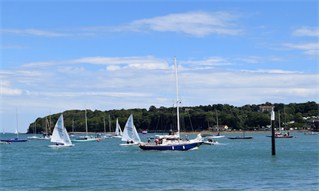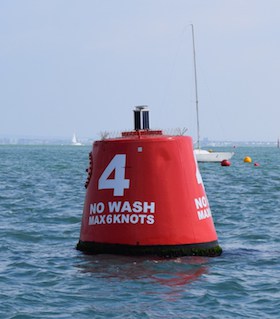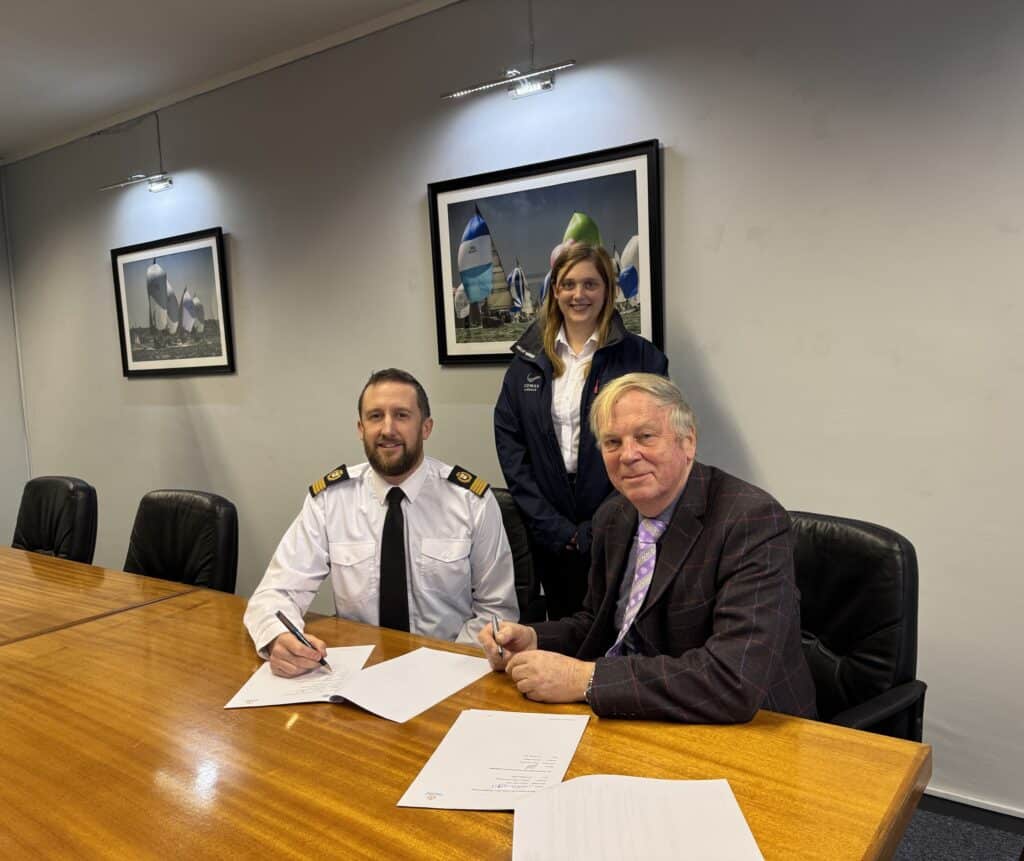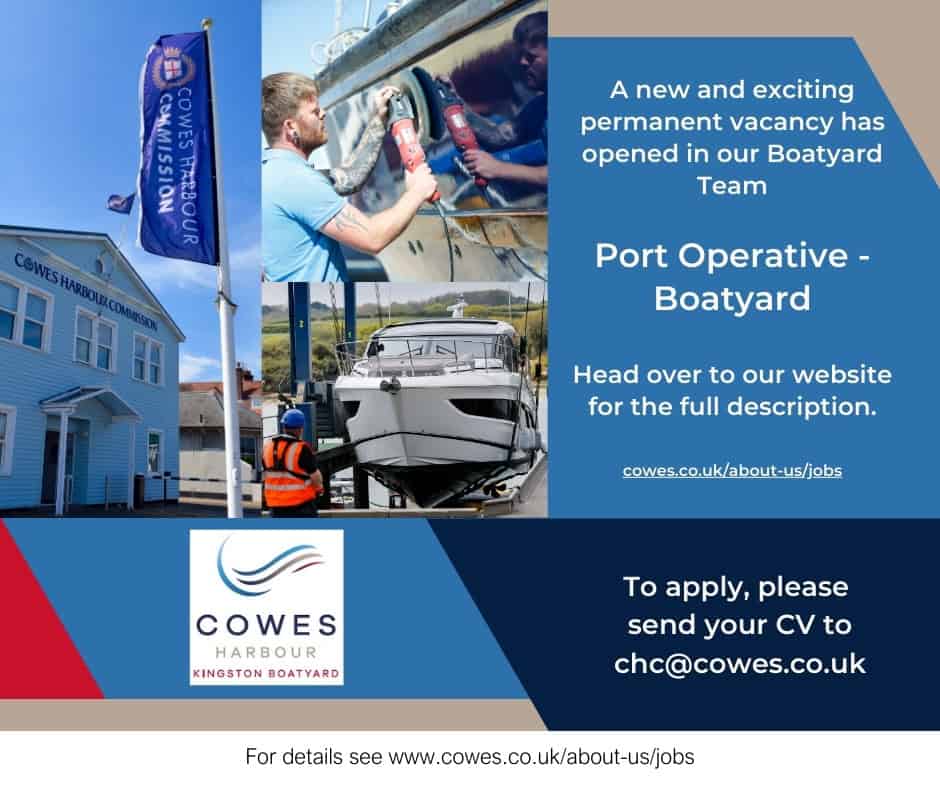
“The Master of any vessel loading or unloading cinders, bricks or dung shall cause a canvas cloth or sheet to be fastened from such vessel to the wharf or quay”. So said Cowes Harbour Byelaws as recently as 1972!
Around 400 BC Plato argued, “Good people don’t need laws to tell them to act responsibly and bad people will find a way around the laws”. However, we have all grown up in a society that runs on written instructions.
 Part of the business of Cowes Harbour Commission since 1897 has been the management of rules to ensure that all those who use the harbour can do so in safety and without unnecessary inconvenience caused by others.
Part of the business of Cowes Harbour Commission since 1897 has been the management of rules to ensure that all those who use the harbour can do so in safety and without unnecessary inconvenience caused by others.
Until 2013 harbour legislation was enshrined within Harbour Byelaws. A major problem with Byelaws is that they are relatively unwieldy; they can only be changed by Government Order and this takes time. Accordingly, Byelaw amendments were only introduced when absolutely essential and it was difficult to react quickly to changing circumstances.
In 2012 an Act of Parliament approved a new statute; the “Cowes Harbour Revision Order”. This came into effect the following year and opened the way for Cowes Harbour Commission to give or amend “directions for the purpose of promoting or securing conditions conductive to the ease, convenience or safety of navigation, the safety of persons and the protection of property, flora and fauna of the harbour”, in other words General Directions.
An important provision was placed in the Revision Order to ensure that harbour stakeholders were consulted before any new Direction could be introduced. This provision dictates that statutory consultees, including the Cowes Harbour Advisory Committee, the Chamber of Shipping, and the RYA, must all agree to any new Direction and a minimum of six weeks is required for this process. Should they not agree, then an independent adjudicator may be appointed.
Cowes Harbour General Directions were updated as recently as 1st June 2017, when in response to submissions largely from the Dayboat classes, rules for sailing within the small craft moorings area were modified to meet the particular needs of unpowered sailing vessels. The full text of the latest edition of Cowes General Directions can be found on CHC’s website.
Meantime, some of the General Directions that are most frequently ignored by harbour users, usually through ignorance of their existence, are:
3.1. The International Regulations for Preventing Collisions at Sea apply.
3.2: The 6 kt through the water speed limit within the Inner Harbour or within 100m of the Mean High Water Mark. This includes the coast out to Egypt Point to the west and Old Castle Point to the east.
3.3: The requirement not to cause wash that may cause damage to, or endanger the safety of other persons, vessels or property in the area above.
3.4: The 6 kt speed limit within the Shrape Watersports Area unless dinghy sailing, windsurfing, kite boarding, rowing or safety craft working in support of these activities.
3.6: Not to navigate or attempt to navigate a vessel while unfit by reason of drink or drugs, or allow any other person in the vessel to do so.
3.7: If you are leaving a marina or mooring you must give way to vessels navigating in the fairway.
3.8: The requirement to report any incident or collision to the Harbour Master.
3.17: In general, not to pass through the small craft mooring areas.
4.4: Prohibited activities include kite surfing, and paddle boarding north of No. 8 fairway buoy, located just south of Kingston Wharf.
4.5: If you are underwater diving on your yacht you need a permit to dive from either the Harbour Master or marina manager.
4.6: Sailing yachts must keep the engine running and ready for immediate use when navigating the Inner Harbour.
5.5: No tying up to navigation beacons or buoys.
5.15: No barbecues on the pontoons.
6.1: Give way to the Chain Ferry.
7.8: No landing on the breakwaters.
It is the policy of Cowes Harbour Commission to only prosecute an offender in extreme or repeated circumstance. The policy is to “educate not legislate”. Anyone breaking a General Direction will usually at first be offered “advice”. This might be followed by a formal written warning. All the Berthing Masters are now equipped with body cameras and have received police training in the gathering of evidence should prosecution follow, but this will hopefully not be necessary. However, if the transgression is taken to court it could result in a fine of up to £2,500 plus costs.
As Plato said: “Good people don’t need laws”. Most of the General Directions could be described as good seamanship and consideration for all other river users. Hopefully, you will agree that Cowes Harbour General Directions are mainly common sense.
Written by Capt. Peter Jackson (RN) and CHC.

 Part of the business of Cowes Harbour Commission since 1897 has been the management of rules to ensure that all those who use the harbour can do so in safety and without unnecessary inconvenience caused by others.
Part of the business of Cowes Harbour Commission since 1897 has been the management of rules to ensure that all those who use the harbour can do so in safety and without unnecessary inconvenience caused by others. 

